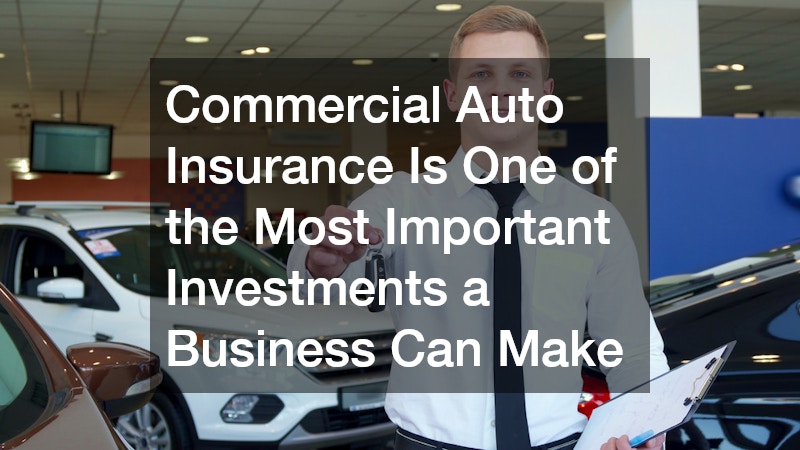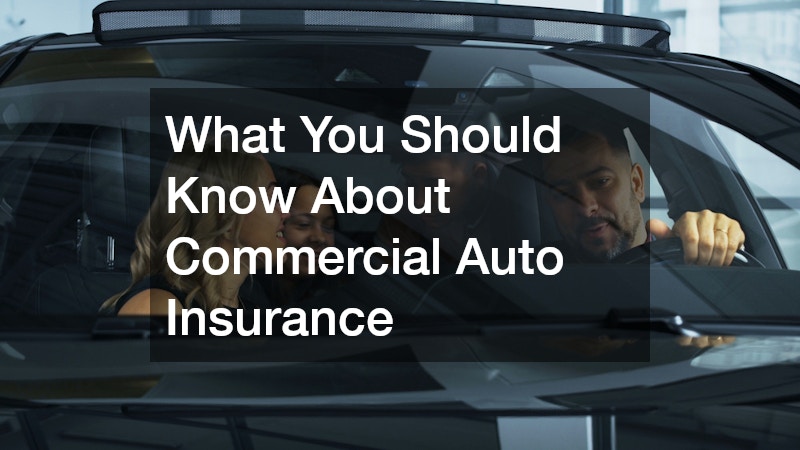Commercial auto insurance is one of the most important investments a business can make to safeguard its operations and assets. Whether your company owns a single delivery van or manages an entire fleet of service trucks, vehicles are often vital tools that keep business running smoothly. Yet, they also introduce risk—accidents, theft, and damage can lead to costly setbacks. Commercial auto insurance helps mitigate these risks by covering financial losses related to vehicle use in business operations. Understanding how these policies work, what they cover, and what affects their cost can make all the difference in protecting your bottom line and ensuring long-term stability.
What Types of Coverage Are Available Under Commercial Auto Insurance?
Commercial auto insurance is not a one-size-fits-all solution. It’s made up of several coverage options designed to address the wide range of risks associated with business vehicles. Below are the most common types of protection available.
1. Liability Coverage
Liability coverage is the foundation of any commercial auto policy. It pays for bodily injury or property damage that your business is legally responsible for following an accident. For instance, if one of your drivers rear-ends another vehicle while on a delivery, liability insurance covers medical bills, vehicle repairs, and potential legal expenses. This protection is essential not only for financial reasons but also as a legal requirement in most states.
2. Collision Coverage
Accidents happen—even to the most cautious drivers. Collision coverage helps pay for the cost of repairing or replacing your vehicle after it collides with another car, object, or overturns. This coverage ensures your business vehicles are back on the road quickly, minimizing downtime and loss of productivity. It’s particularly important for businesses that rely on their vehicles daily, such as contractors, delivery services, or transportation companies.
3. Comprehensive Coverage
Comprehensive coverage extends protection beyond collisions. It covers damages caused by events outside your control, such as theft, vandalism, fire, or natural disasters like hail or flooding. Businesses with high-value vehicles or those parked in high-risk areas benefit greatly from this coverage, as it helps protect against unpredictable losses.
4. Uninsured/Underinsured Motorist Coverage
Unfortunately, not every driver on the road carries adequate insurance. If your commercial vehicle is involved in an accident with someone who lacks sufficient coverage—or none at all—this policy helps pay for your damages and medical expenses. For business owners, this coverage ensures that your operations don’t come to a halt due to another driver’s negligence or lack of insurance.
What Factors Influence the Cost of Commercial Auto Insurance?
Just like personal auto insurance, several factors determine how much you’ll pay for commercial auto coverage. Understanding these factors can help you manage costs effectively while maintaining adequate protection.
1. Type and Number of Vehicles
The size and nature of your fleet play a major role in determining premiums. Larger fleets mean more exposure to risk, which typically results in higher costs. Similarly, vehicles designed for specialized tasks—such as dump trucks, tow trucks, or refrigerated vans—carry greater risks and higher replacement costs, impacting premiums accordingly.
2. Employee Driving Records
Your drivers are the front line of your business’s safety reputation. Insurers evaluate the driving records of all employees who will operate company vehicles. Clean driving histories can significantly reduce your rates, while records with accidents or traffic violations can increase them. Regular driver training and safety programs can help lower this risk and improve your overall insurance profile.
3. Industry and Business Type
Not all businesses face the same level of risk. For example, a florist delivering local orders poses less risk than a long-haul trucking company covering multiple states. Insurers consider how and where your vehicles are used when calculating premiums. Businesses in industries involving heavy transportation or hazardous materials generally pay more for coverage.
4. Coverage Limits and Deductibles
Your choice of policy limits and deductibles also impacts your premiums. Higher coverage limits provide greater protection but come at a higher cost. Conversely, selecting a higher deductible—what you pay out of pocket before insurance kicks in—can reduce your premiums but increase your financial responsibility during a claim. Finding the right balance depends on your business’s financial capacity and risk tolerance.
How to Choose the Right Commercial Auto Insurance Policy
With so many coverage options and variables affecting cost, selecting the right policy requires careful consideration. Here are some steps to guide your decision-making process.
1. Assess Your Coverage Needs
Start by analyzing your business operations. Consider how often your vehicles are used, the distances they travel, and the type of goods or services they transport. A landscaping business might prioritize coverage for equipment theft, while a courier company may need higher liability limits due to frequent deliveries. Understanding your specific risks helps tailor your policy to your actual needs.
2. Compare Multiple Quotes
Insurance rates can vary widely among providers. Take time to gather quotes from several reputable insurers to compare coverage options, exclusions, and premium costs. Don’t focus solely on price—look for value, flexibility, and responsiveness in customer service.
3. Review Insurer Ratings
An insurance policy is only as good as the company behind it. Research the financial stability and reputation of potential insurers using third-party ratings such as AM Best or Standard & Poor’s. Reading customer reviews and testimonials can also provide insight into how efficiently a company handles claims.
4. Consider Bundling Policies
Many insurers offer discounts when you bundle commercial auto insurance with other policies, such as general liability, property, or workers’ compensation coverage. Bundling not only reduces costs but simplifies policy management by consolidating your coverage under one provider.
Commercial auto insurance is more than a legal requirement—it’s a strategic investment in your business’s continuity and security. From liability protection to coverage for theft and natural disasters, the right policy shields your company from unexpected financial losses that could otherwise derail operations. By understanding the different types of coverage, recognizing what influences your premiums, and taking a thoughtful approach to selecting your policy, you can make informed decisions that safeguard your business for the long term.
In today’s fast-paced, risk-filled environment, having reliable commercial auto insurance isn’t just smart—it’s essential. Protecting your vehicles means protecting your business, your employees, and your peace of mind.





